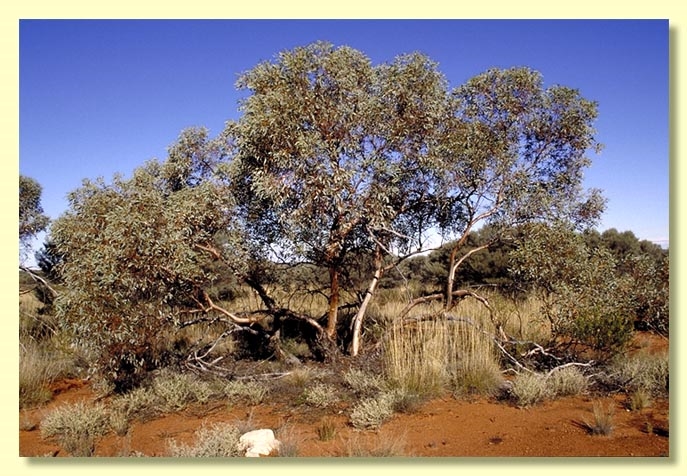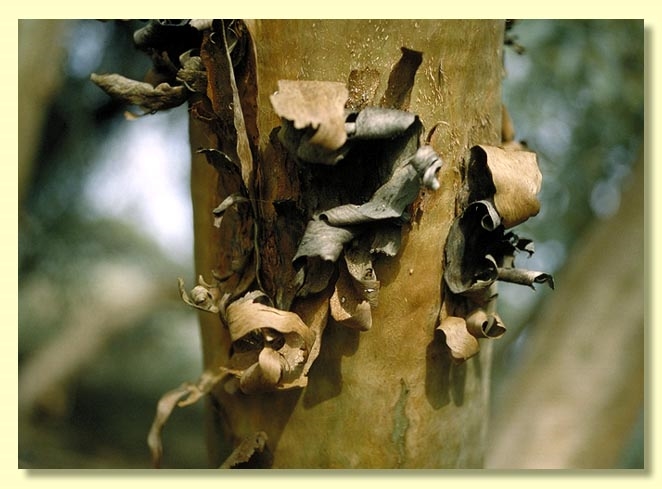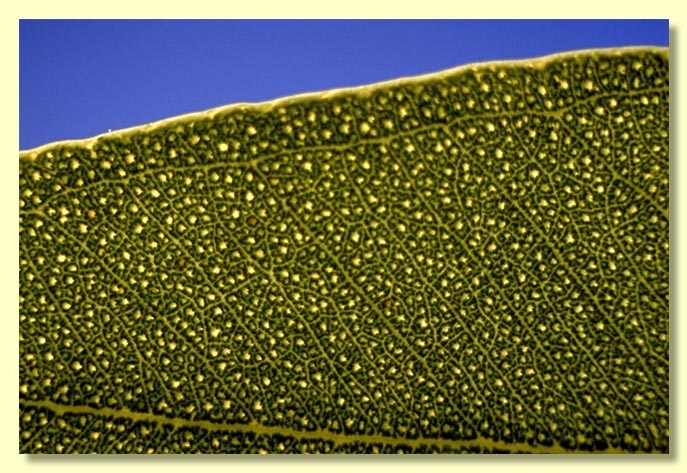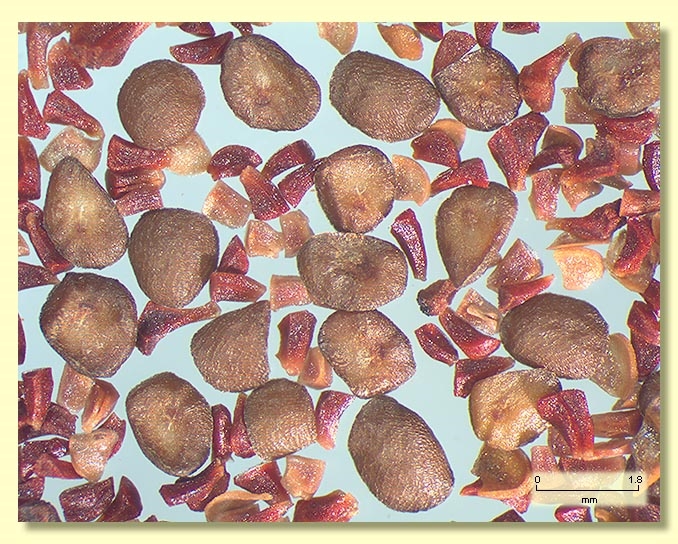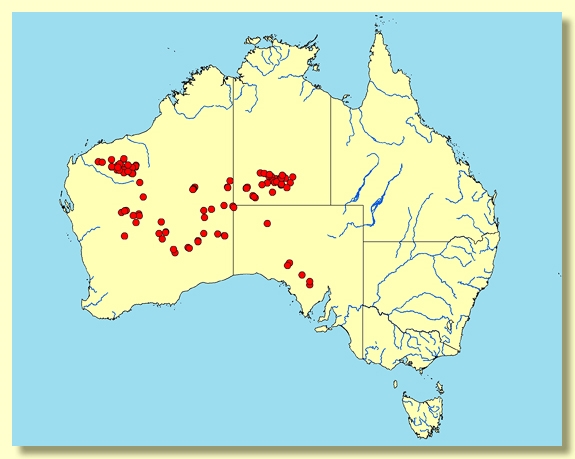Euclid - Online edition
Eucalyptus trivalva
Eucalyptus | Symphyomyrtus | Bisectae | Glandulosae | Accedentes
Bark partly or wholly rough on trunks with grey to reddish brown curly strips of partly decorticated bark (rarely smooth throughout); smooth bark pale grey to grey-brown, shiny pink-brown to greenish when newly exposed.
Branchlets yellowish, rarely glaucous; oil glands present in pith.
Juvenile growth (coppice or field seedlings to 50 cm): stems rounded in cross-section, glaucous; juvenile leaves always petiolate, opposite for a few nodes then alternate, ovate, 5–8 cm long, 3–5.5 cm wide, dull, bluish grey to glaucous.
Adult leaves alternate, petioles 0.8–2.3 cm long; blade lanceolate to elliptical, 5–14 cm long, 0.8–2.8 cm wide, base tapering, concolorous, dull, usually grey-green to blue-grey, side-veins at an acute or wider angle to midrib, densely reticulate, intramarginal vein close to margin, oil glands island and intersectional.
Inflorescence axillary, unbranched, peduncles 0.5–2 cm long, buds 9 or 11, pedicellate (pedicels 0.1–0.4 cm long). Mature buds obovoid to fusiform (0.7–1 cm long, 0.4–0.6 cm wide), green to yellow, scar present, operculum conical to rounded, stamens inflexed or rarely mostly inflexed with a few irregularly flexed, anthers oblong, versatile, sub-basifixed, dehiscing by longitudinal slits (non-confluent), style long, stigma blunt to tapered, locules 3(4), the placentae each with 4 vertical ovule rows. Flowers white.
Fruit normally shortly pedicellate (pedicels (0)0.1–0.3 cm long), usually cupular, cylindrical or broadly obconical, 0.5–1 cm long, 0.5–0.8 cm wide, disc descending, valves 3(4), enclosed or near rim level.
Seeds straw-coloured to pale brown, 1–2.3 mm, ovoid to flattened-ovoid, dorsal surface shallowly reticulate, hilum ventral.
Cultivated seedlings (measured at ca node 10): cotyledons Y-shaped (bisected); stems square to more or less rounded in cross-section; leaves always petiolate, opposite for 5 to 8 nodes then alternate, broadly lanceolate to ovate, 4–7.5 cm long, 1.2–3.5 cm wide, dull, grey-green (not glaucous)
Flowering has been recorded in July and August.
A mallee widespread in arid Western Australia from the Hamersley Range south to Sandstone and east into the southern Gibson Desert and Great Victoria Desert, extending into southern Northern Territory as far as about Alice Springs and south into South Australia as far as the Everard Range, Tarcoola and near Lake Gairdner on Mt Ive station. The stems are covered with loose, rough bark and the adult leaves are dull, grey-green to blue-grey. The fruit are usually three-valved.
Eucalyptus trivalva belongs to Eucalyptus subgenus Symphyomyrtus section Bisectae subsection Glandulosae because the cotyledons are bisected, buds have an operculum scar and the branchlets have oil glands in the pith. Within this subsection, E. trivalva belongs to a small subgroup of nine species, series Accedentes, further characterised by having buds with inflexed stamens, ovules in four rows and juvenile leaves petiolate. The species are E. accedens, E. laeliae, E. leprophloia, E. trivalva, E. pruiniramis, E. zopherophloia, E. prominens, E. pilbarensis and the recently described E. baiophylla.
E. trivalva is distinguished from its related species by the combination of desert distribution, mallee habit, loose rough bark and crown of greyish dull leaves. In the north of its Western Australian distribution it is easily distinguished from E. pilbarensis, which has glossy green leaves and smooth bark. Both these species may grow together e.g. on Mount Nameless.

